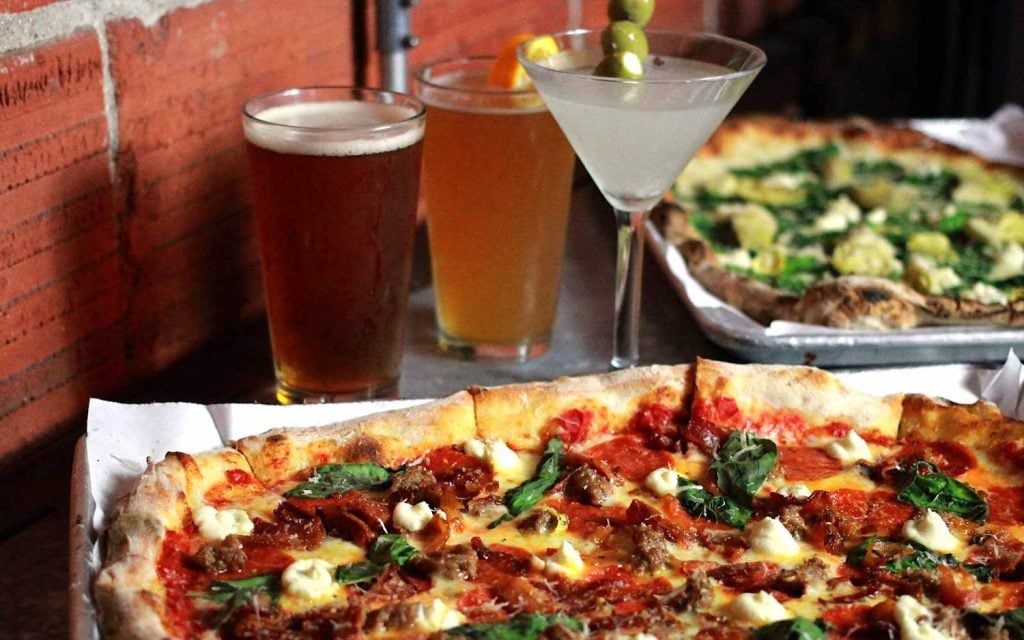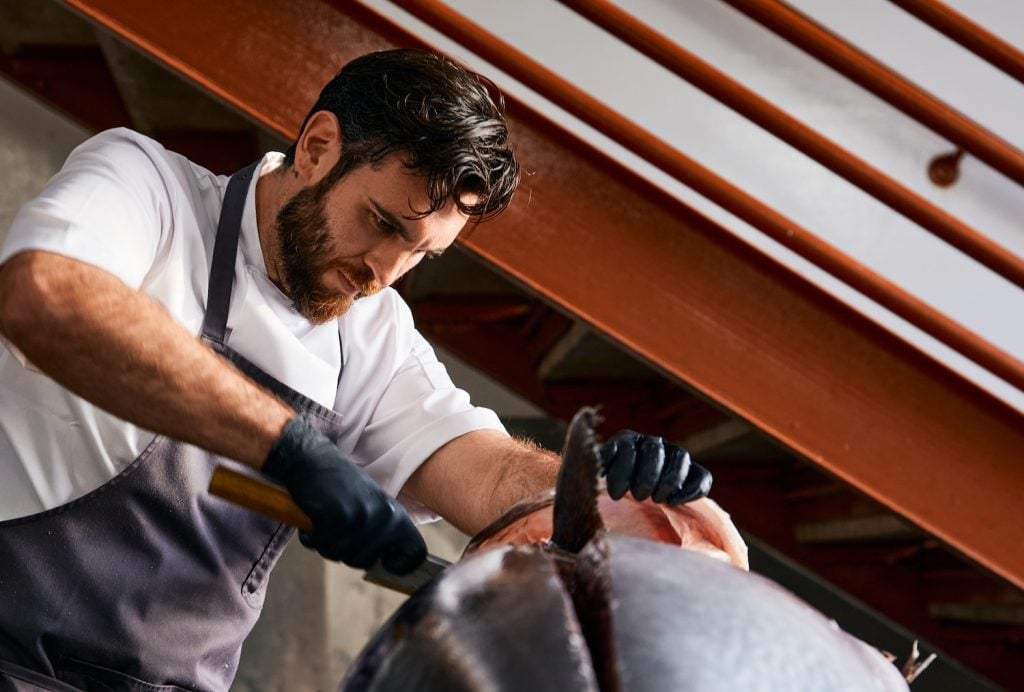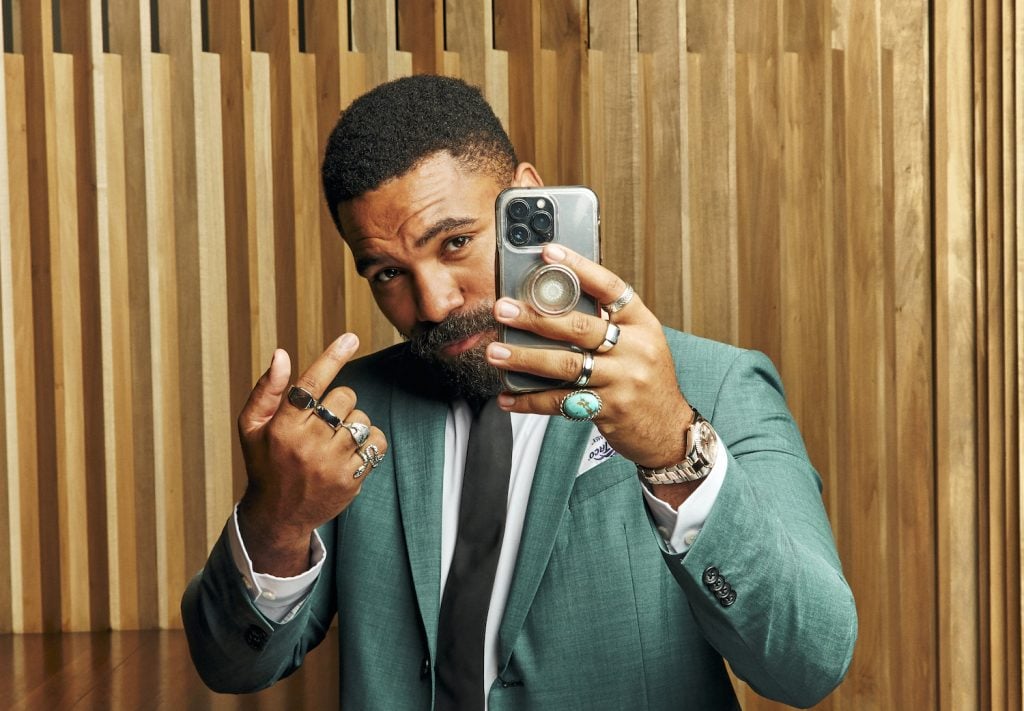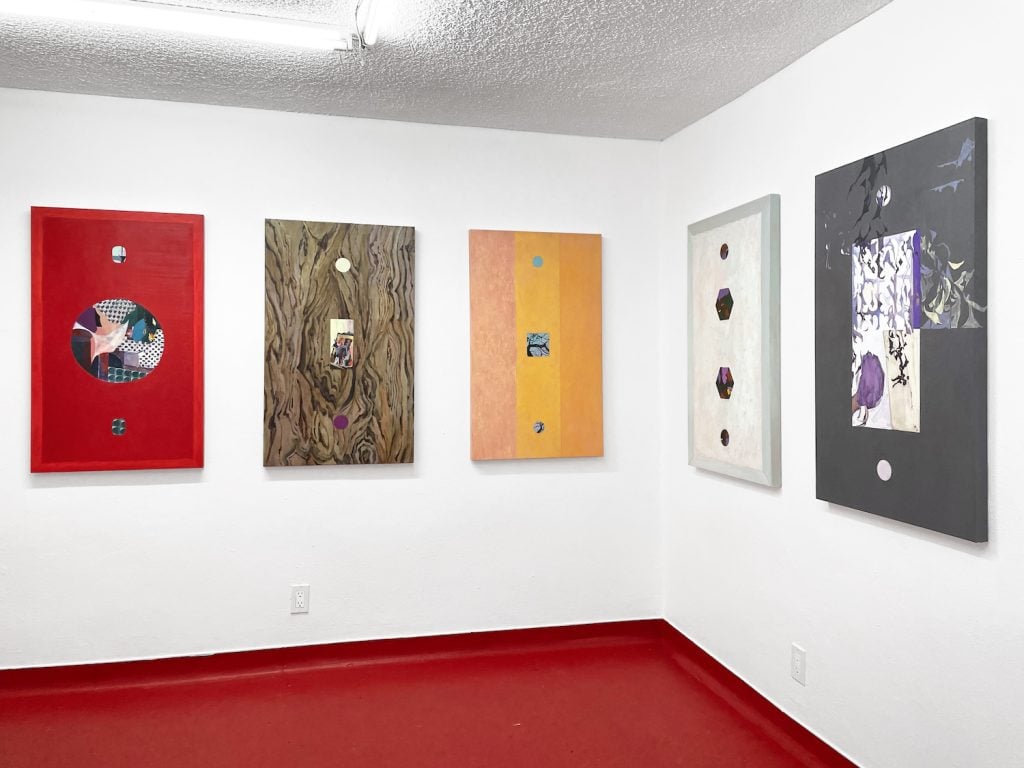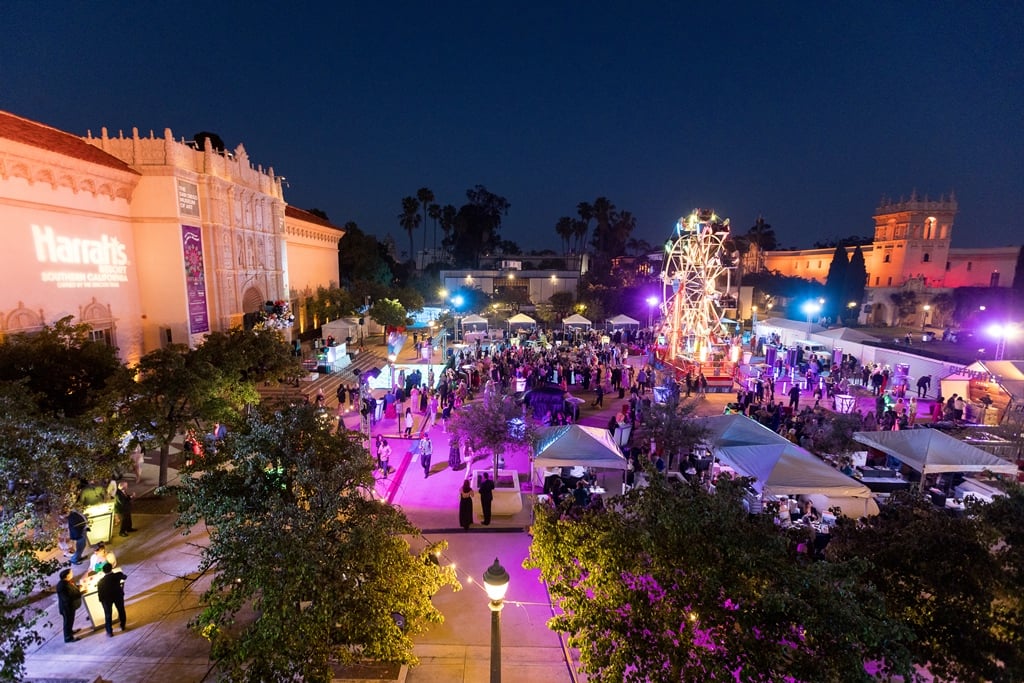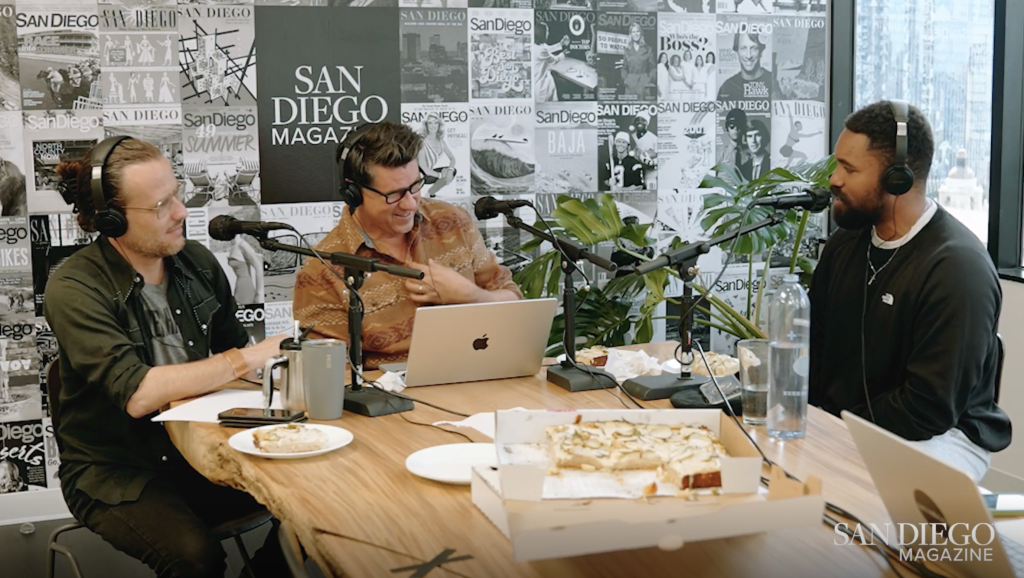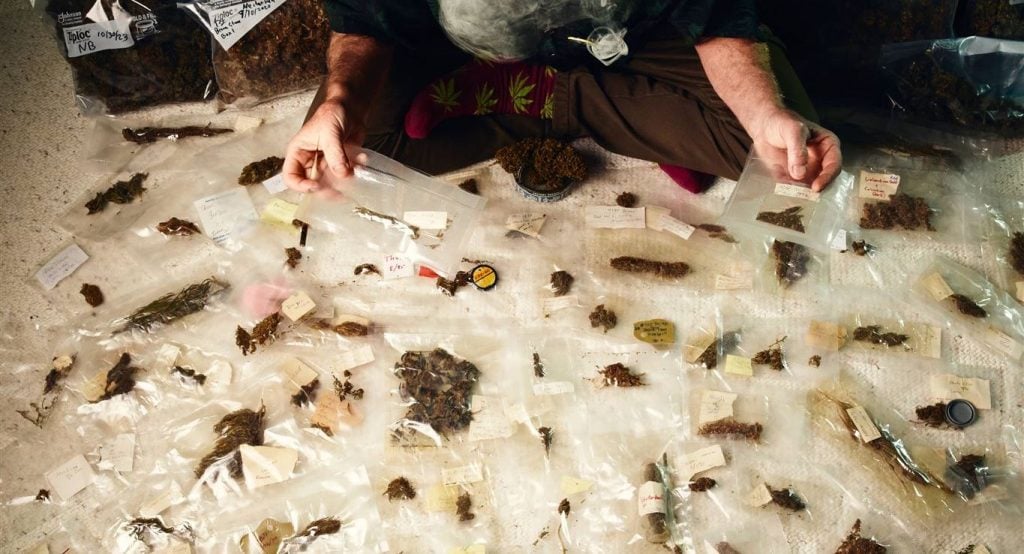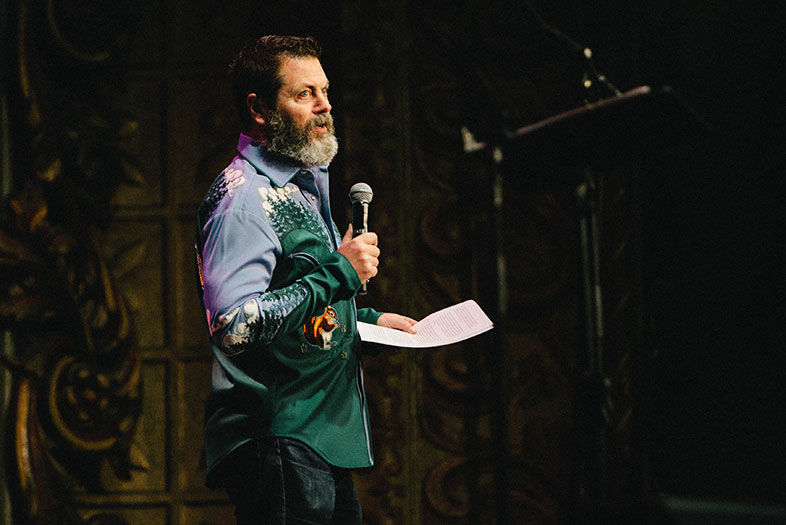All Rise
December 14, 7 p.m. and 9 p.m. Balboa Theater, Downtown sdbalboatheatre
Nick Offerman wants you to know there’s more to him than Ron Swanson. Yes, he does love woodworking and whisky drinking; he even runs a woodworking collective and just launched his own scotch label with Lagavulin.
Ever since the final episode of NBC’s hit sitcom Parks and Recreation aired in 2015, Offerman’s left the fictional storylines behind and hit the road with stand-up routines that are true to himself. First with American Ham, then Full Bush, and now All Rise, concluding its run this month in San Diego.
During a rare break, he called us from his home in Los Angeles—or “a suburb of San Diego to the north,” as he kindly calls it—to divulge what’s in store in the 80-minute show on December 14, and to share his fondness for our city.
San Diego is your final tour stop. Safe to assume you’ve saved the best city for last?
It’s just the good fortune; scheduling a tour is an incredible puzzle. I’m tickled I get to come to San Diego at all. I’ve been there many times over the years, to see theater more than anything. As a man of the stage over the—what am I, 49?—26 years I’ve been working professionally, The Old Globe and La Jolla Playhouse have been legendary. My wife, Megan Mullally of Will & Grace fame, she ostensibly could credit her big break to La Jolla, where she did this Broadway production of How to Succeed in Business Without Really Trying in the ’90s. That was written by Abe Burrows, whose son is Jimmy Burrows, who was responsible for Mary Tyler Moore, Cheers, Taxi, Frasier, and for directing every episode of Will & Grace. He and some of the producers saw Megan in that show in La Jolla, and that is thought to be part of how she ended up on Will & Grace.
Speaking of your wife, I hear she had a part in directing All Rise. Do you take well to her bossing you around?
I invited her to boss me around. I’ve only been touring as a comedian for six or seven years. When I started, I sort of had to just figure out how to dribble. Once I got my fundamentals together—to clumsily continue the analogy—now I’m ready to play varsity. I brought in a specialist, an actual professional coach—Megan was born with a profound head for showbiz. When I was writing it, I said, “Hey, would you put your brain on this, please?” It’s a great lesson for any relationship. If you can get on top of your own ego enough to understand what your partner is great at, ask them to utilize that. To bring her superpowers to bear on my project, it’s pretty good for everyone.
What about church inspired the tour name?
I guess the theater has always been my church. I grew up in the Catholic church, but soon discerned it wasn’t for me. Before I left, I used to do the gospel readings as a teenager. That was really where I first understood my penchant for moving a crowd of people with talking. Then I discovered theater almost immediately in college and went to theater school at the University of Illinois, and I said, “Oh, the feeling I get here and what we’re trying to do here feels a lot more effective than what they were supposedly doing back at St. Mary’s.”
What should audiences expect from the show?
The show’s in seven sections. It’s all poking fun at how we get ourselves in trouble as a group of people. When I sat down to write the show, I just took a tiny step back from America and said: “Wait, this is hilarious. We are all doing this to ourselves. We live on this piece of land between Canada and Mexico and the two oceans, and we get to pick how things go. Despite that, we’re all throwing ire and rancor at someone else.” So, it’s making fun of us for being dumb enough to get ourselves into this situation. Each section ends with a song: a piece making fun of our tendency to white supremacy; a piece making fun of homophobia (specifically people who think it’s bad news when their kid comes out as gay, they undergo some ribbing from me); I make fun of our consumerism. Finally—I’m more sentimental I think than people take me for—the show ends with a song titled “Us Dipshits Gotta Stick Together.”
Sounds like a happy enough ending.
It is. I’m an eternal optimist. I love people. I have unlimited faith in our ability to improve our situation.
It’s interesting, because so many people know you as Ron Swanson, who’s the opposite of an optimist. Do you feel obligated to feed audiences some of that character’s flavor on stage?
I determined pretty quickly that it would be gross and cheap if I were to continue to exploit Ron Swanson once I was done playing Ron Swanson. I do feel like my own ideology and my own sort of delivery have a lot of the same flavor as Ron Swanson, because we’re using the same toolbox. For some reason, the particular slow way I talk seems to make people laugh, and they really enjoy my songs, because people just can’t get enough of ABAB rhyme schemes, apparently. Now, that said, if the audience calls me out for an encore, they are treated to a couple of after-dinner mints that should appease Parks and Rec fans.
Well, let’s set the record straight. In what ways are you not like Ron Swanson?
I’m a much more rounded human, because my life is not crafted by a comedy writers’ room of geniuses. I’m also not a hyper-masculine patriarch of a government office in Indiana. I’ve had two semesters of ballet. I’m a very sensitive person. I like to cry at movies. You could say I love things that are often thought of as gender specific. I love sewing, knitting, cooking. I am very accomplished at doing the laundry. But then I can go build a canoe and catch a bunch of fish for dinner, clean the fish, and then build a fire and cook them. I’m just a handy person. I have people from all across the spectrum come to me or read my books about making things, and I don’t like to close anyone off by saying, “This is for boys” or “This is for girls.”
And you’re hosting a show with Amy Poehler, Making It, that gets right to that point.
Yes, it’s making all kinds of stuff out of any materials you can think of. There is some woodworking on the show, but again, when people consume media, it forces them to think in a specialized way. For example, people naturally know only certain bits of information, perhaps that I have made dining tables. It doesn’t occur to them that I’m also good at sewing a button on my blouse.
This comedy show aside, what was the last thing you made?
The last thing is something I made a lot of over the years, and that’s a card for my wife. We just had our 16th wedding anniversary. That’s something I always encourage people to do when they say, “I’m no good at making stuff.” Even if you’re the worst artist in the world, if you have a loved one like your mom, take a piece of paper—especially a cool, unlikely piece of paper, or just pull one out of the printer—and fold that thing in half and draw a flower on the front and then open it up and write, “Mom, I love you. Love, your son.” The thoughtfulness in that small gesture goes so much further than what you can purchase at the card store. That’s the magic in making things. Like my songs. Nobody listens to my songs and says, “Wow, you should be at Carnegie Hall.” But they laugh, and I understand that people appreciate the gesture. That’s the sort of magic I’m trying to get across when I encourage people to make things any way they can. It’s good for you.

San Diego, You May Now Rise for Nick Offerman
Photo by Michael Gomez
